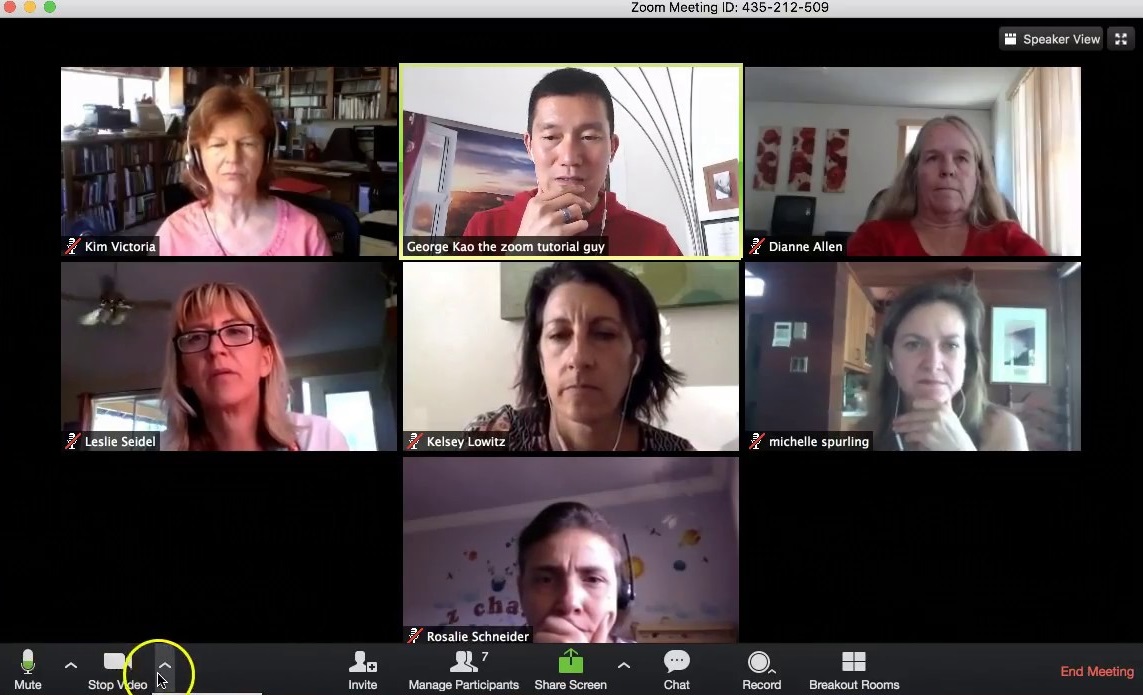Download Zoom 5.3.52879.927 for Mac from our website for free. The application's installer is commonly called Zoom-1.1.4.dmg. This Mac application is an intellectual property of Hubapps.com LLC. This Mac download was scanned by our antivirus and was rated as clean. The program relates to Games. Note: As our world comes together to slow the spread of COVID-19 pandemic, the Zoom Support Center has continued to operate 24x7 globally to support you.Please see the updated Support Guidelines during these unprecedented times.
With the COVID-19 lockdown, I needed to do some videoconferencing with zoom.us, but I wanted something higher quality than my MacBook’s built-in webcam. So instead I wanted to use my Canon 5D III. (These instructions are for macOS only, not Windows)
First we need to export your camera’s proprietary liveview into a video stream we can use. To do this you can install v002-Camera-Live:
Turn on your camera and connect it to your computer with USB, then run Camera Live and double click your camera in the list to activate it. This makes the liveview output from your Canon camera available as a Syphon video stream.
But zoom.us doesn’t support Syphon video directly, it only supports webcams. So you now need to convert the Syphon stream into a virtual webcam using CamTwist Studio:
In CamTwist’s menu, go into Preferences and change the resolution to 1280×720 and the framerate to 25 fps, then quit CamTwist and reopen it. Double click “Syphon” in the left pane, then on the right pane select “Camera Live” as your source. Now in the menu bar, click View -> Preview, and you should see a small preview window from your Canon camera:
If your camera falls asleep, you will need to half-press its shutter to wake it back up and reselect the Camera Live stream in the right pane.
Zoom Us App Microsoft
Now your Canon camera will appear as a webcam in Chrome’s settings, at least in Chrome version 81, so you’ll be able to use it with various webapps. But it will not be available in the Zoom.us app’s video settings if you’re using Mojave or Catalina. This is because Zoom is running in a high security mode that prevents CamTwist’s extension from being loaded into it.
To fix this you need to codesign the zoom.us app to add an entitlement which allows it to load libraries from third-party authors. Quit Zoom if it is already running.
First, create a codesigning identity for yourself:
- Open the “Keychain Access” app
- In the main menu select Keychain Access -> Certificate Assistant -> Create a certificate…
- Call it “my-zoom”, set identity type to “self-signed root”, and certificate type to “code signing”
- Click Create, and continue to finish the wizard
Now run these commands in the Terminal to make a new copy of the zoom.us app on your desktop and export its current entitlements to a file:

Open up the entitlements.plist file that is created on your desktop in TextEdit to add these two lines before the closing </dict>:
The end result should look like this:
Now back in the Terminal, you can use that new entitlements file to re-sign Zoom:
Now you have a fixed version of Zoom on your desktop ready to use! You can either move it into your Applications folder to replace the original one, or keep it on the desktop. You may need to right-click on it and click “Open” to run it instead of double-clicking on it. Now if you enter Zoom’s preferences, you should find CamTwist as a choosable camera and everything will work nicely:
Note that you’ll likely need to repeat this codesigning when Zoom is updated.
The Zoom install package for macOS is mad. Rather than actually using the installer to install things, it does everything in the preinstall script. That's bonkers, and also means that the system won't have a list of the files it installed, because it's doing it using shell script.
Zoom Us App Macos High Sierra
The script appears to install two items, namely:
/mac-run-app-before-login.html. If the user opening the package isn't an administrator, it looks like it will install the app in the user's home folder instead. If they are an administrator, Zoom will delete the ZoomUsPlugIn.plugin from /Library if it's there, but it still installs to ~/Library.

It also adds Zoom to your Dock automatically, without asking.
Zoom.us Macos App
Bizarrely, zoom.us.app is installed by unzipping a 7-zip archive, then unzipping another 7-zip archive containing graphics and copying that inside the Frameworks folder in the zoom.us.app bundle.
If run by an administrator, the script also executes a script as root to change the ownership of zoom.us.app to root:admin. /how-to-delete-apps-on-mac-is.html.
If you are on macOS 10.10 or above, the script will delete the file 'ZoomAudioDevice.kext' from the zoom.us.app bundle. Perplexingly, this file doesn't actually seem to exist in the current zoom.us.app iteration (it looks like it has been replaced with a userland audio driver instead). On Mac OS X 10.9 and earlier, with the older zoom.us.app that presumably had the KEXT in it, the KEXT would be copied to the ~/Library/Application Support/zoom.us/Plugins, which it alarmingly makes writable by the 'staff' group - so you'd have been loading a KEXT from a directory in your home folder that is writable to other people on the machine(!!)
That's all the installer does, but when the zoom.us.app application is first executed, it also creates the folder ~/Library/Application Support/zoom.us, which holds a database and also a copy of the retina version of the graphics bundle. The application also creates two plist files in ~/Library/Preferences, namely